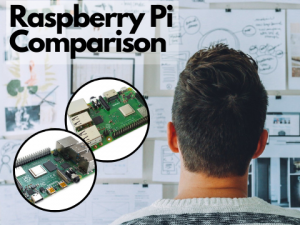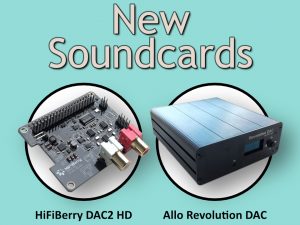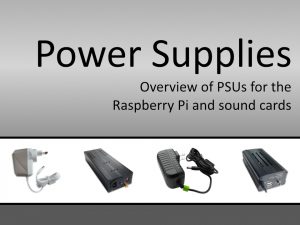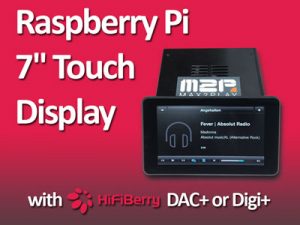Overview of Raspberry Pi Sound Card Specs
0 Comments
In our sound card comparison, different terms regarding the performance features and built-in components of our sound cards appear which may not be familiar to everyone. That’s why we have categorized these terms and collected them in three easy-to-read tables. For each one you can find short descriptions in the tables which simply explain their essential characteristics. If you have any questions or feedback, feel free to leave a comment below.
Core Components |
||
| Sound Chip | integrated circuit for sound output on computers | The heart of the sound card with D/A converter and interfaces to the rest of the system. The sound chip enables the sound output and directly affects the sound quality. It specifies sound parameters such as maximum sampling rate and bit depth. If necessary, values such as filters and the dynamic range can be adjusted. |
| Clock | ensures correct timing during operation | Submits pulses at a specific frequency. Consists mostly of an oscillator with quartz crystal, from whose frequency higher and lower frequencies are generated by synthesis. Thus, a constant output signal in frequency and amplitude is ensured. |
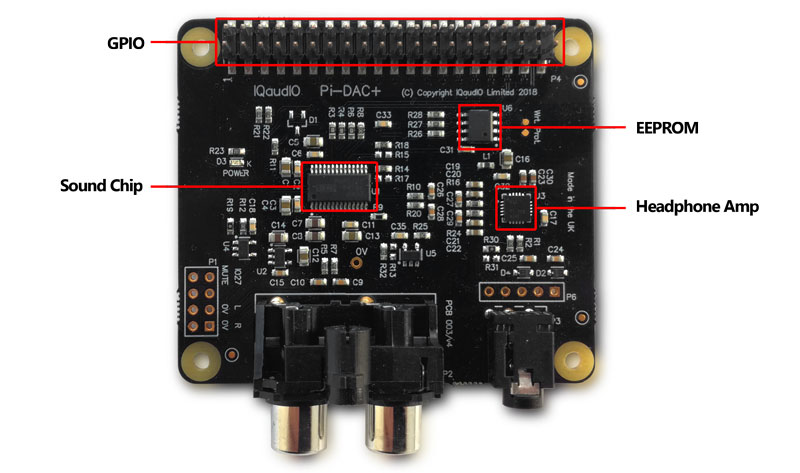 |
| Headphone amplifier | affects volume when using headphones | Additional amplifier for operating headphones, which directly affects the maximum volume. |
| GPIO | group of multiple pooled contacts, slot for HAT sound card | General contact pins on an integrated circuit whose behavior can be determined by programming. |
Other Components |
||
| Filter capacitors | absorbs voltage peaks, ensures an even current flow | Low AC impedance capacitors for diverting high frequency noise. Attenuate transient voltage pulses, caused by (e.g.) switching operations. |
| Film capacitors | Block voltage spikes and high (spurious) pulses in the higher frequency range | Due to the lower series resistance they have excellent pulse and current carrying capacity and a very high insulation resistance. |
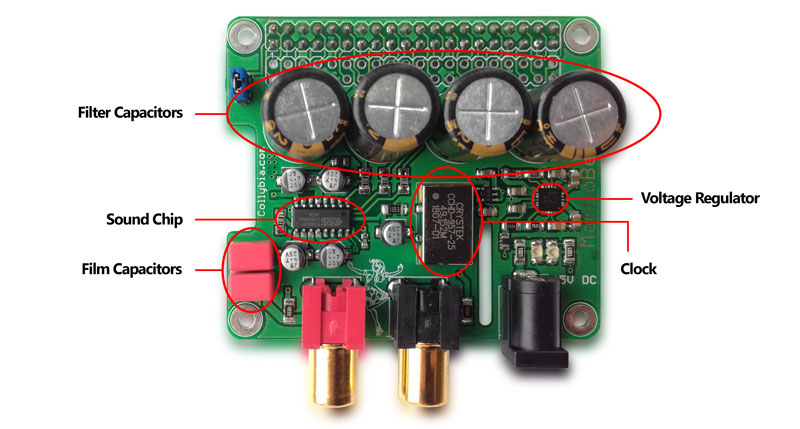 |
| Audio filter | filter certain frequencies | Audio filters can amplify, transmit or attenuate some frequency ranges. |
| EEPROM | for storing smaller amounts of data, usually preset by the manufacturer | A nonvolatile electronic memory device that stores data in which the information must be preserved even without applied supply voltage. |
| Inductor | protects the board from destructive voltage spikes and high inrush currents | A passive two-terminal electrical component that stores energy in a magnetic field when electrical current flows through it. |
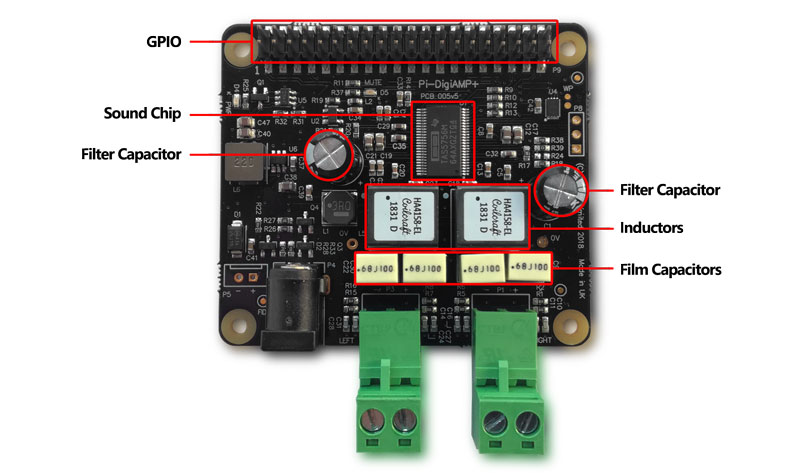 |
| Switch Mode Transformer (DC-DC Transformer) | converts the voltage level of a DC power source into another (after converting it to high frequency AC power) | Used for galvanic isolation when operating a switching power supply to an AC line. Improves the voltage balance between transmitter and receiver circuits. |
| DC-DC Converter | converts the voltage level of one DC source into another | Electrical circuit that converts a DC voltage supplied to the input into a DC voltage with a higher, lower or inverted voltage level. |
| Jitterbuffer | minimizes the clock skew | Signal is held in a buffer to ensure trouble-free operation if the original signal is affected by jitter. (e.g. NB3L553 in Allo BOSS DAC) |
Interfaces, Parameters and Software |
||
| Sampling rate | Frequency of converting an analog to digital signal | Frequency with which an analogue signal (time-continuous) is sampled (measured) in a given time and converted into a time-discrete signal. Unit: Hertz |
| Bit depth | determines the dynamic range of the signal | Number of bits used in quantizing the analog signal per sample. Unit: Bit |
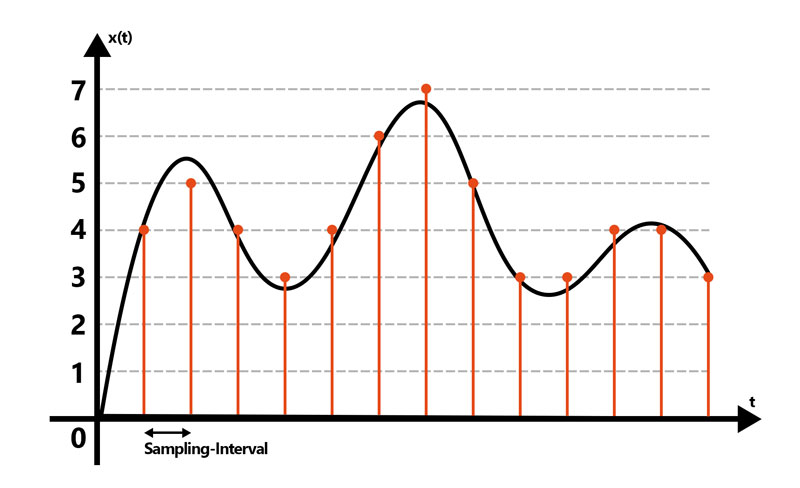
Sampling of a time-continuous signal: |
| Output Power | Power sent to the speakers in watts. | Power that is delivered at the output terminals of a power source continuously or as a time-limited overload. The output power of the amplifier determines among other things the achievable volume. (Amp related value) |
| Signal-to-noise ratio (SNR) | Evaluation score assessing the quality of the audio signal | Measure for the technical quality of the wanted signal, which is overlaid by a noise signal. Ratio of the mean power of the wanted signal to the mean noise power of the interfering signal. Unit: Bel |
| I2S | Interface for the transmission of digital audio data | Interface for communication between integrated circuits with serial digital audio data. |
| ALSA (Advanced Linux Sound Architecture) | standard sound architecture for Linux systems | Basic component of the sound system under Linux. Provides the core modules that can be used to address the sound adapter. |

